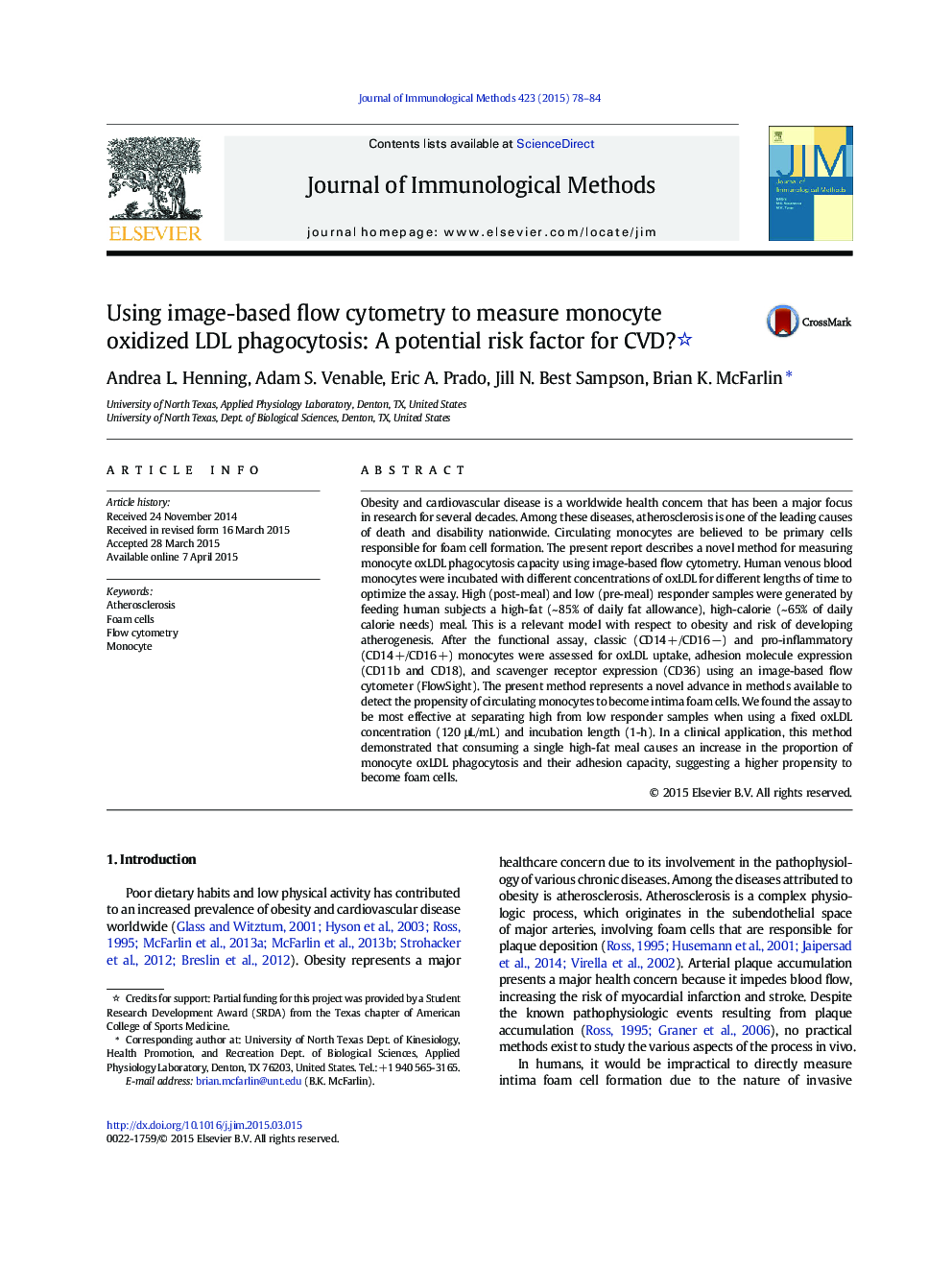| Article ID | Journal | Published Year | Pages | File Type |
|---|---|---|---|---|
| 2088075 | Journal of Immunological Methods | 2015 | 7 Pages |
•Circulating monocytes are a useful proxy measure of intima foam cells in humans.•Image-based flow cytometry revealed additional information about monocyte phagocytosis.•High-fat intake increased monocyte oxLDL phagocytosis, which may be indicative of increased potential to form intima foam cells.
Obesity and cardiovascular disease is a worldwide health concern that has been a major focus in research for several decades. Among these diseases, atherosclerosis is one of the leading causes of death and disability nationwide. Circulating monocytes are believed to be primary cells responsible for foam cell formation. The present report describes a novel method for measuring monocyte oxLDL phagocytosis capacity using image-based flow cytometry. Human venous blood monocytes were incubated with different concentrations of oxLDL for different lengths of time to optimize the assay. High (post-meal) and low (pre-meal) responder samples were generated by feeding human subjects a high-fat (~ 85% of daily fat allowance), high-calorie (~ 65% of daily calorie needs) meal. This is a relevant model with respect to obesity and risk of developing atherogenesis. After the functional assay, classic (CD14 +/CD16 −) and pro-inflammatory (CD14 +/CD16 +) monocytes were assessed for oxLDL uptake, adhesion molecule expression (CD11b and CD18), and scavenger receptor expression (CD36) using an image-based flow cytometer (FlowSight). The present method represents a novel advance in methods available to detect the propensity of circulating monocytes to become intima foam cells. We found the assay to be most effective at separating high from low responder samples when using a fixed oxLDL concentration (120 μL/mL) and incubation length (1-h). In a clinical application, this method demonstrated that consuming a single high-fat meal causes an increase in the proportion of monocyte oxLDL phagocytosis and their adhesion capacity, suggesting a higher propensity to become foam cells.
